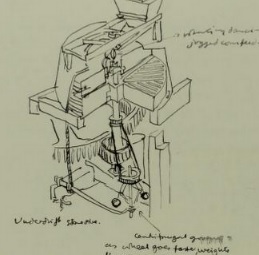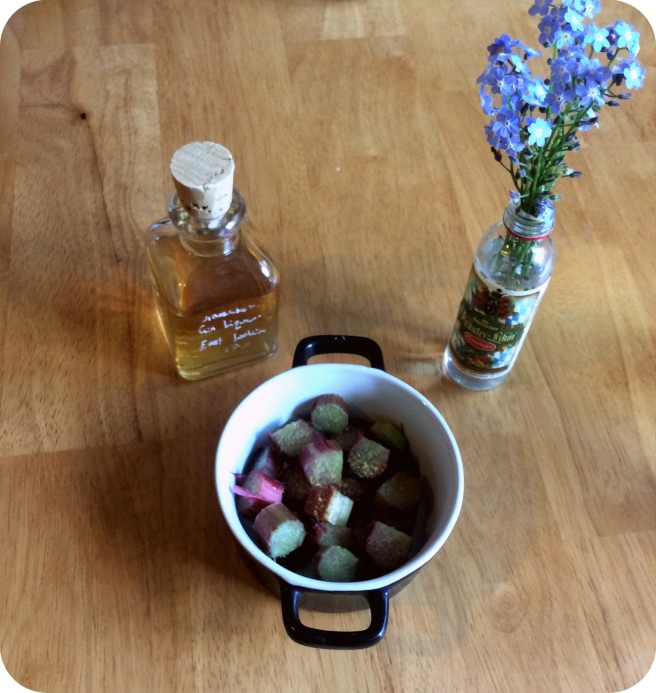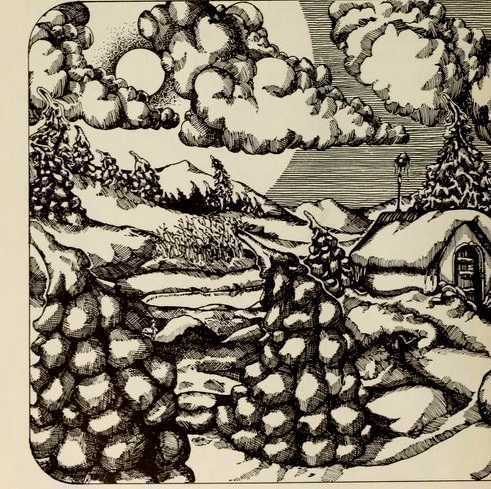Books:
The Four Seasons of Brambly Hedge by Jill Barklem
1990, Philomel Books
 The other day we went to the first country show of the year. It’s always a lot of fun, with tractor and hedgelaying displays, dogs, falconry, sheep shearing, sheep herding, and much more.
The other day we went to the first country show of the year. It’s always a lot of fun, with tractor and hedgelaying displays, dogs, falconry, sheep shearing, sheep herding, and much more.
 I was excited to see that the May was in bloom, which means it really is properly Springtime!
I was excited to see that the May was in bloom, which means it really is properly Springtime!
Where we live it takes a long time for the warm weather to arrive, and even when it does, you can never trust it to stay nice, so we take advantage of the sunshine whenever we can. And one of the best ways to do that is to have a picnic, like the mice do in the “Spring Story” in The Four Seasons of Brambly Hedge.
 The Brambly Hedge stories involve the daily lives of a community of mice. Kind of like Redwall, but without the fighting and violence. The edition of Four Seasons that I read has an interesting introduction which includes the author’s description of how she came to write these stories. She says that one of her favorite pastimes as a child was to observe the tiny lives of little creatures in the grass, which is something that I used to do as well. Another interesting point is that she cites Arthur Rackham and Leonardo da Vinci as her main influences. Arthur Rackham is a wonderful illustrator, but it was da Vinci who inspired her architectural and technical interests.
The Brambly Hedge stories involve the daily lives of a community of mice. Kind of like Redwall, but without the fighting and violence. The edition of Four Seasons that I read has an interesting introduction which includes the author’s description of how she came to write these stories. She says that one of her favorite pastimes as a child was to observe the tiny lives of little creatures in the grass, which is something that I used to do as well. Another interesting point is that she cites Arthur Rackham and Leonardo da Vinci as her main influences. Arthur Rackham is a wonderful illustrator, but it was da Vinci who inspired her architectural and technical interests.
Apparently all the various dwellings and technology in Brambly Hedge was designed to actually work in real life, “apart from the occasional problem of scale.” Everything the mice use could in theory be provided by the countryside in which they live.
 You can see this thought and attention in the lovely illustrations, which are fun to pore over to try to see every little minute detail.
You can see this thought and attention in the lovely illustrations, which are fun to pore over to try to see every little minute detail. I thought the introduction was very interesting, and while the stories themselves are obviously for younger children, older children who are interested in illustration, writing, or general world building might find it useful.
I thought the introduction was very interesting, and while the stories themselves are obviously for younger children, older children who are interested in illustration, writing, or general world building might find it useful. But on to the story! “Spring Story” is the tale of what happens in the mouse community on a Spring day which happens to be the birthday of young Wilfred Toadflax. The rest of the mice conspire to make a surprise picnic for him. That is the gist of the plot, but the appeal is in the details of the various characters, their homes, and the exciting comestibles they come up with for the picnic.
But on to the story! “Spring Story” is the tale of what happens in the mouse community on a Spring day which happens to be the birthday of young Wilfred Toadflax. The rest of the mice conspire to make a surprise picnic for him. That is the gist of the plot, but the appeal is in the details of the various characters, their homes, and the exciting comestibles they come up with for the picnic.
This chapter is a fun read, and while the text may be difficult for under sevens to read on their own, the pictures are really the star of the show anyway and should be interesting for all ages. And it would be good inspiration for young children to invent their own world, maybe inspired by watching the minibeasts in the grass. It is certainly a great inspiration for a picnic.

Just some of the things described in this story are: bread and bramble jelly, buns, cheese, bramble brandy, hazelnut cake with cream, and primrose puddings. Bread and jam, buns, cake, and cheese are all great picnic foods. And it would certainly be interesting to make a primrose pudding!  However, without a community of people to carry the picnic, and without access to such ingredients as primroses or clover flour, I think it’s better to pack something simpler. Here are two picnic menus that can be carried by one person.
However, without a community of people to carry the picnic, and without access to such ingredients as primroses or clover flour, I think it’s better to pack something simpler. Here are two picnic menus that can be carried by one person.

Picnic 1: Cream Tea
(serves 2 )
- Small jar of jam
- Small jar of clotted or thick cream
- 4 crumpets, toasted
- 2 hard-boiled eggs
- A pinch of coarse salt in a screw of wax paper
- A bottle of raspberry cordial
- A bottle of May wine

Pack in a hamper with two spoons, cloth napkins, and a container for the egg shells. May wine (or Maiwein or Waldmeisterbowle) is a wine steeped with sweet woodruff which might be difficult to get hold of outside of mainland Europe, plus it is not for the kids, obviously. You could substitute any other floral drink like elderflower cordial.

Picnic 2: Sausages & Crumble
(serves 1 )
- Italian sausages fried with onions & peppers, and topped with fresh basil
- Rhubarb crumble cooked in a mini ramekin with a lid
- Bottle of water or apple juice
Pack the sausages, onions and peppers in a ramekin or tiffin with a flat lid. Put the rhubarb ramekin on top of the other tiffin. If you don’t have these exact containers you could use any sort of stackable containers. Put the stacked containers and cutlery (a spork is most useful) on top of a large cloth napkin and tie two corners tightly on top, and then the other two corners over again, like a furoshiki. This is really convenient and easy to carry.

Another thing to consider is entertainment. In Brambly Hedge, after the picnic the grown-ups napped while the children played hide-and-seek, which is totally valid depending upon the circumstances.

But you can also bring a book, which is another benefit of having a hamper.

I brought a book of folk songs because it seemed appropriate for a country show in May.
 For the second picnic I packed a rhubarb crumble, which is definitely seasonal and an easy dessert. This one is grain-free.
For the second picnic I packed a rhubarb crumble, which is definitely seasonal and an easy dessert. This one is grain-free.
Grain-Free Rhubarb Crumble
Ingredients
4 stalks of rhubarb, chopped
2 1/2 Tbsp butter or other fat
1 cup ground almonds
1/3 cup raw honey or sweetener of choice
1 tsp vanilla extract
1 tsp ground ginger
1/3 c. coconut sugar or other coarse sugar
2 Tbsp gooseberry liqueur or gooseberry jam (optional)

Method
Put the chopped rhubarb in a baking dish (you can also put some in little ramekins like I did for the picnic; everything else is the same, it just cooks in about a 3rd of the time).

Dust with the ginger and dot with the honey. Drizzle over the vanilla and the liqueur or jam if using. Put the rhubarb in the oven under the grill for 5 minutes, just until it starts to soften a bit. For the topping, mix the butter into the almond meal with your fingers until it is fully incorporated, then add the sugar. Sprinkle over the top of your rhubarb. This makes a soft, English-style crumble, if you prefer crunchy you could add flaked almonds, coconut flakes or oats. Bake at 175 C or 345 F for 20 to 30 minutes (10 to 15 for a ramekin). The crumble is done when it is golden and a little bubbly.

With Summer on the way and a long weekend this week both in the UK and the US, now is a great time to pack up your picnic of choice and go find someplace to enjoy the sun.





































